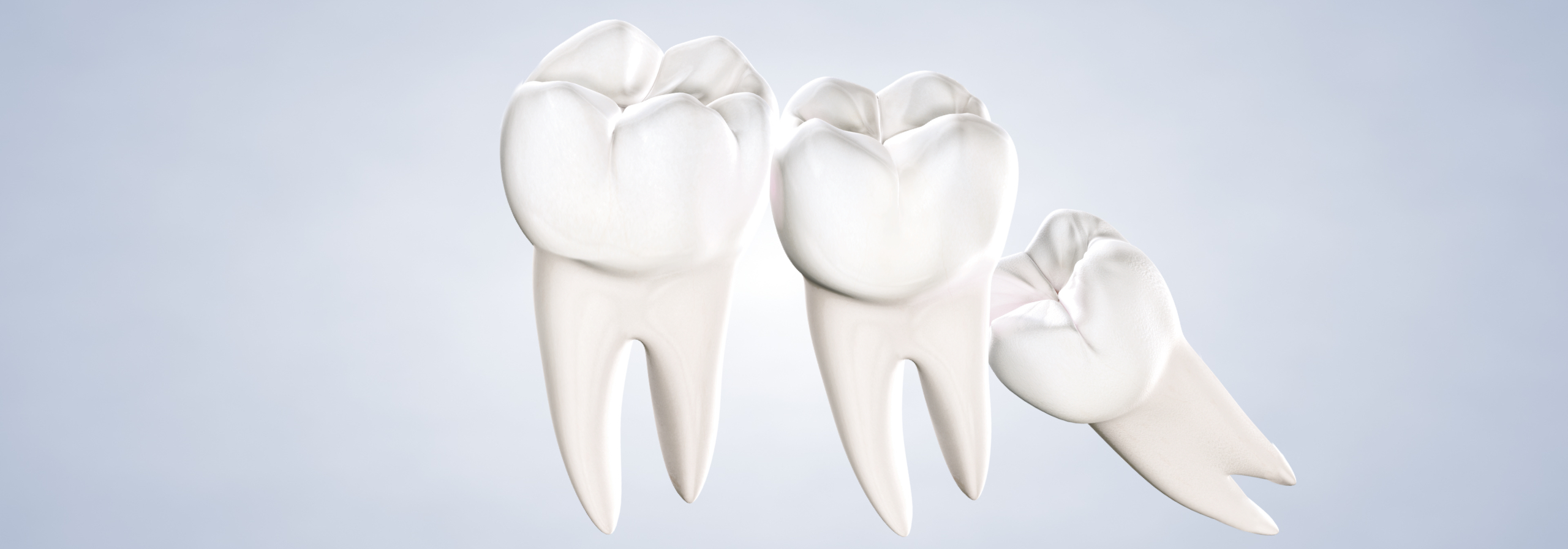
Wisdom teeth, or third molars, are an extra set of teeth that grow in the back of the mouth. Dentists and oral surgeons recommend having them removed as soon as possible to avoid many oral health problems. By knowing what to expect during the wisdom tooth extraction process, you can feel more confident and informed about your treatment.
Steps of the Wisdom Tooth Removal Process
The Consultation
Many patients are referred to an oral and maxillofacial surgeon directly from their general dentist when their X-rays show the presence of wisdom teeth. Others experience pain in the mouth and seek out an oral and maxillofacial surgeon on their own.
During your initial consultation with your oral surgeon, you will receive an oral examination. Additional 3D scanning might be necessary in order to properly diagnose your condition and design the treatment plan. These advanced digital images allow your doctor to view the bones and tissues of your face from every angle. In doing so, your surgeon can avoid nerves and other structures, preventing complications during surgery.
After a thorough evaluation, your surgeon will walk you through your personalized treatment plan. This includes a discussion about your anesthesia and sedation options.
Oral surgeons offer a multitude of options, including local anesthesia, nitrous oxide, IV sedation, and general anesthesia. Most patients undergo IV sedation for wisdom tooth extraction. The types of anesthesia include:
- Local Anesthesia—A local anesthetic is applied directly to the surgical area. You will remain awake and be able to drive yourself home afterward. This can be combined with other types of anesthesia.
- Nitrous Oxide (Laughing Gas)—Inhaled through a mask, this type of sedation produces a calming effect and provides mild pain relief. It is often used with other anesthetic options to help you relax and prevent discomfort.
- IV Sedation—This is administered into a vein in the arm or hand and will put you into a sleep-like state. You will drift in and out of consciousness, able to respond to your surgeon, but not able to feel pain. You will wake up afterwards with no memory of surgery.
- General Anesthesia—Administered in a hospital setting, general anesthesia is inhaled through the nose or administered intravenously and causes you to lose total consciousness. This is often reserved for more complex procedures, such as corrective jaw surgery or facial trauma.
Your doctor may give you specific instructions not to eat or drink anything prior to the procedure based on the anesthetic option you choose. In many cases, you will schedule your surgery for a different day and return to your surgeon’s office.
The Surgery
Wisdom tooth removal procedures can be performed at the oral and maxillofacial surgeon’s office. The length of the procedure depends on the number and position of the wisdom teeth to be removed.
Your surgeon will administer the chosen form of anesthesia. Once it has taken effect, the procedure will begin. Your surgeon will remove any erupted wisdom teeth using forceps, similar to a standard tooth extraction.
Impacted wisdom teeth are ones trapped beneath the gum tissue. To remove an impacted wisdom tooth, your surgeon will make a small incision in the gums and then remove the tooth. Large teeth may need to be broken into smaller pieces for easier removal.
Once all of the wisdom teeth have been extracted, your surgeon will place sutures as necessary over the empty tooth socket. These will typically dissolve in a few days.
You will rest in the office until the sedation wears off and you are awake. When undergoing IV sedation, you are not permitted to drive home. You must arrange for a responsible adult to take you home after surgery and stay with you for 24 hours while you are under the effects of anesthesia.
The Recovery
Proper care after oral surgery will ensure a speedy recovery and reduce the risk of post-operative complications. Your doctor will provide you with instructions to follow, which you should adhere to very closely.
These instructions will guide you on how to brush your teeth, which soft foods to stick to while you heal, and the recommended activity level. You should be careful not to disturb the blood clot forming in the empty tooth socket. If this clot is dislodged, a painful condition called dry socket occurs where underlying nerves and bone are exposed.
To manage pain after wisdom tooth surgery, your doctor may prescribe pain medications or recommend over-the-counter medications. You can often reduce pain and swelling by using ice packs and getting lots of rest.
Many patients return to their normal routines a few days after surgery. It will take several weeks for the surgical sites to fully heal, but you will be able to resume daily activities much sooner. Some patients resume normal activities the next day, following the guidelines outlined in their instructions.
If you experience pain beyond what is expected or have any concerns during your recovery, be sure to contact your surgeon.